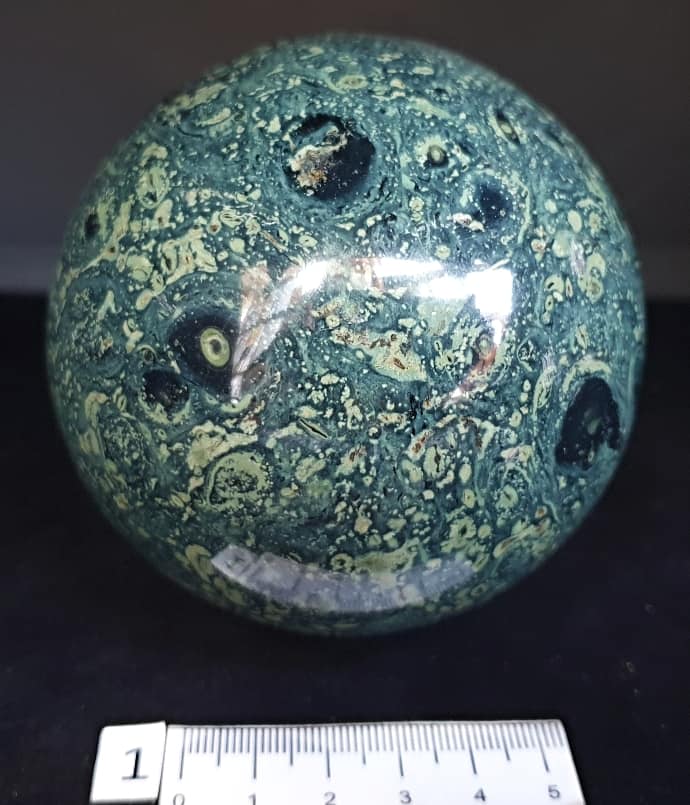Geological Processes
- Mineralisation: After the initial formation of the volcanic rock, additional geological processes such as mineralisation occur. Mineralisation involves the deposition of minerals within the rock, often through the action of hydrothermal fluids. These fluids can introduce new minerals into the rock, further enhancing its unique patterns and colours.
- Orbicular Patterns: The distinctive orbicular patterns in Kambaba Jasper are thought to have formed through a combination of volcanic processes and subsequent mineralisation. The green groundmass is composed mainly of quartz and pyroxene (aegirine), with orbs of alkali feldspar embedded with streaky aggregates comprising tiny needles of amphibole (riebeckite to pargasite).
Geological Timeframe
- Millions of Years: The formation of Kambaba Jasper dates back millions of years, indicating that these geological processes took place over an extended period. The exact age can vary, but it generally points to ancient volcanic activity that occurred in the distant geological past.
By understanding these detailed processes, we can appreciate the complex and fascinating geological history that gives Kambaba Jasper its unique appearance and properties.
Physical Properties
- Colour: Predominantly green with black orbicular patterns.
- Hardness: 6.5 on the Mohs scale, making it relatively hard and durable.
- Structure: Microcrystalline or cryptocrystalline, contributing to its smooth texture and ability to take a high polish.
Occurrence and Distribution
Kambaba Jasper is primarily found in Madagascar, South Africa, and Zimbabwe. These regions provide the ideal geological conditions for its formation, characterised by volcanic activity and rich mineral deposits. The presence of silica, iron, and magnesium contributes to the formation of the microcrystalline quartz and the green and black mineral inclusions.
Uses and Applications
Kambaba Jasper is widely used in jewellery making, ornamental objects, and spiritual practices. Its unique patterns and colours make it a popular choice for decorative items. In the metaphysical community, it is believed to promote tranquillity, balance, and emotional stability. Associated with the Root chakra, it is considered a grounding stone, often used in meditation to enhance connection with the Earth and foster inner peace.
Conclusion
Kambaba Jasper holds significance both as a geological curiosity and as a symbol of the enduring relationship between humanity and the natural world. Its timeless beauty and purported metaphysical properties continue to captivate individuals around the globe, making it a cherished gemstone.
Join Our Wholesale Facebook Group Here
References:
- Mindat.org
- Geology Science: geologyscience.com
- Stone Mania: stonemania.co.uk
- The Crystal Council: thecrystalcouncil.com

